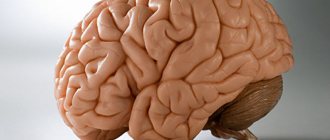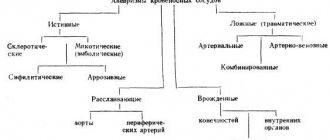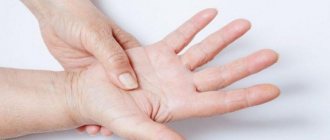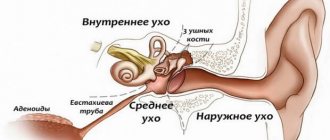Multiple sclerosis is a systemic, neurological disease with predominantly cerebral symptoms. It is possible to damage not only the brain, but also the spinal cord. Also the optic nerve. During the pathological process, destruction of the white matter or myelin sheath of nerve fibers is observed. They are responsible for the normal conduction of impulses. With destruction or demyelination, a decrease in impulse conductivity is observed, down to complete zero. Hence the symptoms and disability as a result.
Contrary to what you may think, sclerosis is not a weakening of memory. This is an everyday definition, false. Sclerosis - scarring, tissue loss. The term “scattered” indicates the multiplicity and distribution of lesions in the brain and spinal cord.
Persistent neurological deficit occurs relatively late in 70% of cases. The final state is determined by a total violation of at least one higher nervous function, often a group.
The epidemiology of multiple sclerosis is controversial. There are 3 million cases reported worldwide. The main contingent of patients are residents of the northern regions: Scandinavia, Northern Europe and others. This suggests that the condition is geographically determined. Residents of hot areas almost never get sick. There is a correlation between proximity to the equator and the incidence of cases. The closer, the fewer patients.
In Russia and Ukraine, a total of 200 thousand clinical situations were discovered.
Both adults and children get sick. The prognosis depends not so much on the treatment as on the nature of the course and form of the pathological process.
General description of the pathology
The disease appears in young people. Multiple sclerosis affects patients from 15 to 60 years of age. Most often, MS affects females between 20 and 40 years old. Residents of temperate climates and Scandinavian countries are at risk. In Australia, Africa, and South Asia, the disease is rare.
Scientists have not established the cause of multiple sclerosis. However, it is known that the disease is autoimmune in nature. In other words, severe immune stress can trigger the disease. For example, measles, herpes, Epstein-Barr, rubella viruses. The onset most often occurs at the age of 25-30 years with the manifestation of a neurological clinic. MS attacks are short-lived. Gait and eyes (vision) are affected. An inexplicable headache appears, a lump in the throat.
Immune system cells slowly destroy the myelin sheath of nerves. Why is multiple sclerosis dangerous? First of all, the disease appears under many masks. No one knows where the nerve destruction will begin.
Factors contributing to the occurrence of the disease:
— Unfavorable ecology; — Radiation; — Autoimmune defects; — Viruses (for example, measles); - Stress.
What does multiple sclerosis lead to? Without treatment, the disease progresses. The patient becomes disabled. But with timely initiation of therapy, the disease can be controlled. People with this disease live long lives when using new drugs. Now in Russia, DMT drugs for multiple sclerosis (drugs that change the course of MS) have been approved. Acute conditions are relieved with hormones.
Addition! SCT (stem cell transplant) does not treat brain atrophy or multiple sclerosis. This technique is not included in either domestic or international clinical protocols.
American therapists include psychosomatics among the risk factors. For example, people with this disease have a labile psyche. They are overly emotional, whiny, and anxious. Psychotherapists associate this disease with attachment problems.
Prevention
Specific measures have not been developed. Prevention of multiple sclerosis consists of a group of recommendations.
Refusal of bad habits, normalization of the rest regime, avoidance of stress, physical overload, exposure to solar radiation in inadequate quantities. It is important to be checked regularly by a neurologist. Especially with an unfavorable family history. Nutrition within the framework of prevention should be fortified. There are no restrictions as such, but clinical recommendations indicate the need to consume a large number of vegetables, fruits, and protein.
Clinical signs
MS is called the disease of a thousand masks. The clinical picture of multiple sclerosis is difficult to describe. The destruction of the myelin sheath of nerves occurs throughout the body. At the same time, the manifestations of the disease are quite scanty. This is due to the fact that neighboring neurons compensate for the function of lost fibers. They prevent a new symptom of the disease from developing.
Clinical manifestations of MS cover all important areas:
- vision;
- gait;
- limb movements;
- autonomic functions (urinary incontinence, constipation).
In the process of destruction of the “subcortex”, tremor appears, as in Parkinson’s disease. Visual symptoms are detected in 60% of patients:
- double vision in lateral vision;
- black spot;
- drop in sharpness;
- color vision impairment;
- pain in the orbital area (retrobulbar neuritis).
“Head problems” are a common complaint among patients with the onset of MS. Headache and dizziness are frequent companions of autoimmune diseases. They occur in 80% of cases. Patients experience:
- depression;
- asthenic syndrome;
- decreased intelligence;
- mild form of dementia.
In 70% of cases, patients with this disease have a labile psyche. First of all, they are prone to hysteria.
Autonomic functions are impaired in 90% of cases. Patients complain of decreased sexual desire at the onset of the disease. The functioning of the pelvic organs is deteriorated: urinary and fecal incontinence appears. Moreover, constipation and delayed diuresis occur.
Pain in MS does not have a clear localization. The patient experiences a burning sensation. Afterwards, numbness occurs in the back area. Spasms in the muscles and limbs are characteristic. Sometimes sharp pain attacks “like an electric shock” occur.
Addition! Lhermitte syndrome has a similar pattern. When the patient's head is tilted, it is as if lightning strikes along the spine. Such a clinic develops in severe cervical osteochondrosis and multiple sclerosis.
Causes and predisposing factors
There has been a ton of research into multiple sclerosis in recent years. Despite the abundance of empirical material and theoretical developments, the disease has not been fully studied, which indicates either the imperfection of the methodology, or, more likely, the multifactorial nature of the process and the complexity of the etiology. The origins of multiple sclerosis are multiple.
Most researchers agree that the basis is a genetic factor. Despite the above, this does not mean that the described diagnosis has a strictly hereditary mechanism and is necessarily transmitted from ancestors to descendants. Only a predisposition is transmitted. At the same time, it has a complex character. There is a group of genes responsible for the body’s resistance to unfavorable external and internal factors. Without going into complex and lengthy discussions and descriptions, it should be said that in patients the activity of these genes is minimal. Hence the increased sensitivity to allergic reactions and toxic lesions. As well as reduced resistance of the myelin sheath and nerve tissue in general to damage.
It is impossible to accurately determine the likelihood of developing the condition in offspring with the modern development of medical science. It is assumed that the risk is 20-35% (according to various estimates, plus or minus). MS is diagnosed more often in women than in men, which once again confirms the genetic mechanism of its development.
Other factors can be classified as triggers or predisposing factors. They cause the onset or increase the risk of pathology.
- Allergic reaction. Has individual features. More often, intolerance to foods, drugs, pigments, particles of wool, and waste products of dust mites occurs. The likelihood of onset of multiple sclerosis due to autoimmune causes is 15% in chronic allergy sufferers. Without a genetic predisposition, manifestation does not occur. The destruction of the myelin sheath occurs in line with the same autoimmune process with the release of histamine and tissue destruction.
- Surgical interventions performed. It is not necessarily on the spinal cord or cerebral structures. At first glance, the reason seems strange, given the remoteness of the damage. Everything is within the framework of logic. The operation leads to the beginning of the regenerative process; tissue restoration requires the participation of stem cells, as well as the active functioning of the immune system. The mechanism of development of multiple sclerosis in such a situation is complex. It is caused by a spontaneous disruption of the body's defenses.
- Injuries.
- Geographical and climatic determinism. As was said, residents of the northern regions get sick much more often. The ratio is almost 10:1. It is not known for certain what this correlation is connected with.
- Belonging to the Caucasian race. If we rank ethnic groups based on the frequency and likelihood of developing multiple sclerosis, Caucasians will be the undisputed leaders. Especially residents of Scandinavian countries. The Asians are walking a little further away. MS develops least often in Negroids and Australoids. According to research, the relocation of a Caucasian to hot countries slightly reduces the likelihood of manifestation, therefore, a large role, apparently, is played not by geographic latitude, but by belonging to a race more resistant to the disease.
- Constant stress. This is not about a disturbance in the emotional background, but about constant tension. Stress can be different. Not only mental, but also physical: from overload as a result of active work to injuries and operations. The release of large amounts of stress hormones plays a role: cortisol, adrenaline, norepinephrine and dopamine. The mechanism of action on white medulla is unknown.
- Frequent exposure to ultraviolet radiation on the patient's body. White-skinned people are especially at risk. The higher the intensity of exposure, the greater the risk. Therefore, it is strictly forbidden to sunbathe in southern latitudes. At the very least, caution should be exercised: no more than 10-15 minutes, or 5-10 minutes during periods of peak solar activity. The above does not apply to Negroids and Australoids. They are more resistant to adverse factors.
- Increased background radiation in the place of residence. Leads to the formation of free radicals and oxidation of cell walls. It is impossible to say in advance what will be the target of charged elements, which cells will be destroyed. It is impossible to predict how this will end. The two most common conditions are tumors (usually malignant) and multiple sclerosis. Patients encounter an increased background of ionizing radiation when carrying out professional activities (submariners, workers of nuclear power plants, uranium mines), as well as people living in unfavorable environmental regions (areas near the Kiev region in Ukraine, in Russia - Ivanovo, Bryansk, Sverdlovsk and other regions).
- Intoxication of the body. Salts of heavy metals, waste products of microorganisms and other substances are especially dangerous.
- Vascular diseases. Atherosclerosis as an example. It consists of disruption of normal blood flow and nutrition of the brain. MS ends in rare cases.
- Permanent infectious pathologies. Tonsillitis, bacterial arthritis and other conditions.
In the absence of clear etiological factors, they speak of idiopathic multiple sclerosis.
The reasons for the development are multiple. Two groups of factors play a role: heredity and triggers. While the former cannot be eliminated, the latter are mostly manageable. All possible provocateurs are monitored by a doctor and eliminated as part of preventive measures. This does not provide a complete guarantee, but it reduces risks to a minimum.
Is multiple sclerosis inherited? No, only a predisposition is genetically determined. Under favorable living and environmental conditions, probability will remain an abstract number.
Forms, types of multiple sclerosis
According to ICD 10, RS is coded as G35. There are three severe variants of the disease:
- Schilder's sclerosis (destruction of the white matter of the brain);
- Marburg disease (affects the trunk and spinal cord, disseminated encephalomyelitis);
- Myelocortical multiple sclerosis (damage to neurons without disturbances in the membrane).
The stages and clinic differ for each patient. There are several types of disease:
- Remitting-relapsing;
- Secondary progressive (SPMS);
- Primary progressive (PPMS);
- Progressive with exacerbations.
What is especially important is that the first type is most common. The disease progresses through periods of exacerbations and remissions. No new symptoms are added. Sometimes the first type of pathology turns into the second (SPMS). At the same time, new symptoms appear. The course of the disease is accompanied by exacerbations.
PPMS is characterized by an increase in clinical symptoms from the onset of the disease. There are no periods of remission, only slight improvement is noted. The last type occurs with episodes of a bright clinic. New symptoms arise against the background of a slow progressive course. In Russia, neurologists have their own classification of the disease. The following forms are distinguished:
- Cerebrospinal – affects the brain and spinal cord;
- Spinal – predominantly spinal localization of symptoms;
- Cerebellar – coordination disorders, walking and stability disorders predominate;
- Stem – clinic for problems with swallowing, breathing, speech defects, hearing, oculomotor defects;
- Optical – vision and color perception deteriorate.
It is especially important that doctors note the clinical diversity of multiple sclerosis. Symptoms appear randomly. Therefore, specialists have difficulty diagnosing the disease. Often the correct diagnosis is made several years after the onset. This significantly affects the effectiveness of treatment.
Treatment
A neurologist treats multiple sclerosis. The treatment regimen in each case is individual. But therapy is complex. The patient is prescribed medications whose action is aimed at eliminating all symptoms and preventing the occurrence of complications.
Multiple sclerosis is difficult to treat. And the reason is not at all the lack of drugs. The difficulty lies in the fact that the attending physician needs to accurately “get” into a certain period of the course of the disease.
Experts note that exacerbations and remissions require the use of different medications. Their name depends on the course of the disease. The doctor's goals are simple:
- Avoid complications during remission.
- Prescribing optimal therapy during an exacerbation: to alleviate the patient’s condition and slow progression.
Neurologists are confident that people suffering from multiple sclerosis do not die from it, but from concomitant diseases. Bedridden patients develop dangerous pathologies: pneumonia, intestinal paresis, bedsores, sepsis, etc.
Therapy and drugs used
Complete healing does not occur even with enhanced therapy. Therefore, the disease is considered incurable. All efforts of doctors are aimed at improving the patient’s quality of life and increasing its duration. The main goal is to achieve sustainable remission. The choice of medications and treatment methods depends on the type of MS:
- KIS. The patient may be prescribed corticosteroids to help relieve inflammation and partially restore the functions of the central nervous system. Also, a neurologist can recommend medications that can change the course of the disease and reduce the likelihood of new exacerbations.
- RRRS. Antiviral agents, corticosteroids, and drugs that improve blood flow are prescribed.
- PPRS. This type of MS is the hardest to treat. The patient is prescribed medications that neutralize unpleasant symptoms and maintain quality of life at an optimal level.
- VPRS. The patient is prescribed immunostimulants and immunomodulators in high doses.
The first signs of multiple sclerosis
The clinical picture of the disease depends on the damage to a specific area. As a result, either motor function or autonomic nerves suffer.
The second negative factor in diagnosis is the rapid disappearance of the clinic. The symptom appears for a few hours or days and goes away. The disease does not manifest itself for months or years. But the destruction of nervous tissue continues. Such intermittent symptoms “delay” timely treatment.
In the early stages, the following symptoms dominate:
- Damage to the cranial nerves;
- Cerebellar disorders;
- Sensitivity disorders;
- Pelvic dysfunctions;
- Movement problems;
- The mental and emotional sphere suffers.
Damage to cranial nerves, cerebellum and sensory disturbances
In multiple sclerosis with brain damage, the first symptoms to appear are:
- blurred vision;
- double vision;
- poor color differentiation.
The patient talks about a “black spot” in the eye. After this, it ceases to recognize color shades. Damage to the cerebellum leads to an unsteady gait. The patient's coordination is impaired. At the same time, multiple sclerosis debuts with motor manifestations.
Symptoms may disappear in a short time. For example, the patient recently walked “like he was drunk.” And an hour later he performs any neurological tests.
Multiple sclerosis causes unexplained pain. There are areas of numbness in various parts of the body. More often the upper or lower limbs and back are affected. Sensitivity is impaired by the type of paresthesia (“goosebumps, tingling with needles”). Areas of burning, dull or sharp pain appear (“as if an iron was put down”). The first signs of sensory impairment appear at night.
Pelvic dysfunctions, motor and emotional-psychic sphere
First of all, the patient is worried about involuntary urination. Problems with the bladder accompany the patient constantly. At the same time, defecation also suffers. The patient has constipation or uncontrollable bowel movements.
Motor problems are often the onset of MS. The patient cannot move his arm or leg. He is unable to perform a complex movement. The gait suffers, the start of walking is disrupted (“it’s difficult to take the first step”).
When you are ill, you often have a headache. Dizziness occurs. Patients lose normal sleep. And also the ability to work decreases. Characterized by rapid fatigue. The patient is irritated, anxious, tearful, touchy. Cannot perform assigned tasks properly. He experiences neurosis, depression and emotional distress. Women are prone to hysteria, men to hypochondria.
Diagnostics
Signs of MS can also be detected in the early stages of the disease. Timely diagnosis will allow you to take all necessary measures to delay irreversible changes.
MRI
A hardware diagnostic method that helps identify atrophied areas of the cerebral cortex and enlarged cavities. So that a specialist can get a detailed image, a paramagnetic liquid is used.
The study is carried out using a tomograph - a high-resolution device capable of creating informative images in three dimensions. The three-dimensional model allows you to detect even the smallest sclerotic plaques. MRI is used to clarify the diagnosis if the attending physician suspects that the patient has multiple sclerosis or diseases with similar symptoms - encephalomyelitis, lupus, etc.
Lumbar puncture
A diagnostic method that involves taking cerebrospinal fluid from a patient. This procedure is painful and is therefore performed using local anesthesia. Research is carried out at the slightest suspicion of MS.
In this case, the diagnosis is made by the “method of exclusion” (when all other ailments with similar symptoms are excluded). The study of the composition of cerebrospinal fluid is carried out in well-equipped medical diagnostic centers.
Electroencephalogram
The essence of the method comes down to determining the bioelectrical activity of the brain and studying the state of nerve fibers. Monitoring brain activity does not imply complex preparatory measures.
The process involves an appropriate device - an encephalograph, consisting of sensors, a unit and a monitor. If the patient has previously been prescribed therapy, this device can be used to determine how effective it was.
Other methods can be used to diagnose MS: radiography, proton magnetic resonance spectroscopy, study of hormonal levels and tumor markers, etc.
Causes of MS
The etiology and pathogenesis of the disease are not fully understood. Scientists identify several possible reasons:
- Rubella, measles, herpes viruses;
- Genetic predisposition;
- Ecogeography of the place of birth.
Severe viruses lead to decreased immunity. They break down the defense system and provoke the onset of the disease. Bacterial infections (chlamydia) work the same way. Multiple sclerosis is not transmitted through airborne transmission or sexual contact. But a serious contagious disease can break the immune system and open the gates to MS.
This disease cannot be considered a hereditary disease. But in close relatives the likelihood of developing sclerosis increases significantly. Especially siblings, children and parents. The genotype study revealed no significant mutations. Doctors talk about the connection between the pathology and certain types of the HLA system (tissue proteins).
The modern geographic hypothesis explains susceptibility to the disease by low levels of vitamin D. The further a person lives from the equator, the higher the likelihood of developing the disease. The leaders among this pathology are residents of Europe.
Forecast
The prognosis depends on the type of pathology, age of manifestation, nature of the course, and sufficiency of therapy. Childhood and adult forms have a positive prognosis associated with long life. The juvenile type leads to death much earlier (we are talking about years). On average, death in the teenage type occurs by the age of 30-35, sometimes earlier.
Remitting forms are associated with a better prognosis.
How long do people live with a diagnosis of multiple sclerosis?
Life expectancy is on average 25-35 years, adjusted for negative and positive factors.
How is MS diagnosed?
Basic diagnostic methods:
- Clinical neurological signs that are revealed during examination by a specialist (neurologist);
- Foci of demyelination in the brain and spinal cord on MRI;
- Oligoclonal immunoglobulins in the cerebrospinal fluid (lumbar puncture required).
When making a diagnosis, the Macdonald criteria are used, the last revision of which took place in 2010.
A neurological examination reveals abnormalities in the spinal cord or brain. The FSS scale is used for this. It allows you to evaluate in points the damage to one or another part of the nervous system.
At an appointment with a neurologist, the patient is tested on the EDSS (Disability Score) scale. It allows you to determine the degree of impairment of specific functions and conduct an examination of the patient’s ability to work. The results of the examination must be reflected in the mailing list for the MSE (medical and social examination).
MRI reveals multiple foci of destruction of the myelin sheath. If the examination reveals a lesion as an incidental finding, then the patient needs long-term observation.
There are some characteristic signs of pathology. For example, Dawson's fingers are an image of perpendicularly arranged plaques of demyelination of the corpus callosum located along the medullary venules.
For differential diagnosis, an electroencephalogram and general clinical tests (biochemical and general blood tests with ESR, red blood cell and hemoglobin levels) are performed.
The essence of the pharmacological approach to the treatment of MS
The main cause of MS is improper functioning of the immune system. Lymphocytes, which usually protect the body, begin to “attack” neurons and destroy their membrane, myelin. Because of this pathological process, the nerve fibers of the spinal cord and brain are quickly destroyed.
Treatment of MS primarily involves suppressing the activity of lymphocytes and the immune system in general. The second step is to combat symptoms that can seriously impair the quality of life and even threaten it.
How to treat multiple sclerosis?
Treatment for the disease depends on its type. Main directions in treatment:
- Relieve an acute condition (hormones, cytostatics, immunosuppressants);
- Prevent progress;
- Compensate for neurological symptoms;
- Remove other signs of MS (spasticity, tremor).
An individual approach to each patient is important. The doctor must determine the type and phase of the process, the possibility of moving to a more severe stage. For this we use:
- MRI data;
- immunological research;
- electromyography data.
Basic treatment methods
Treatment for multiple sclerosis involves the use of medications, a healthy diet, and exercise therapy. Traditional methods and psychotherapy are acceptable as additional methods. However, they should not replace taking essential medications.
To relieve exacerbation of the disease, two types of hormones are used. These are ACTH and CS. This combination quickly and safely suppresses autoimmune inflammation.
Addition! ACTH is an adrenocorticotropic hormone (a synthetic analogue of Tetracosactide). Among the CS drugs - corticosteroids - prednisolone, methylprednisolone, and dexamethasone are used.
In severe cases of MS, cytostatics (methotrexate, azathioprine) are included in the therapy. It is possible to combine them with corticosteroids. Plasmapheresis is used to remove immune complexes.
At the end of the 20th century, PITRS were developed. The number of exacerbations in patients on this therapy is much lower than in other patients with MS. Six funds are registered in Russia today:
- Betaferon;
- Rebif;
- Avonex;
- Copaxone;
- Tysabri;
- Mitoxantrone.
Experimental drugs and traditional medicine
The new drug Alemtuzumab (Lemtrada) is a monoclonal antibody. Recently, it has been used in the treatment of multiple sclerosis. The drug is approved in the Russian Federation and has fewer side effects.
Drugs that restore the myelin sheath of nerve cells are being tested in the USA and Europe. This is a new approach in the treatment of MS. Unfortunately, the drugs have not yet been registered in Russia. Long-term patient follow-up reports have not been published.
The experimental drug is considered to be VMIG. A study on the administration of intramuscular normal immunoglobulins (IMIG) appeared in 2006 and was published in the journal Neurology. The cheaper drug was used for preventive treatment of MS and showed its effectiveness.
It is permissible to use folk recipes in conjunction with the main treatment. To relieve the symptoms of the disease, beaver stream, propolis, and mumiyo are used.
A healthy diet will also help during periods of exacerbation of the disease. Avoiding flour, fatty, fried, salty and spicy foods allows the body to fight inflammation on its own. Short-term use of a ketogenic diet is being considered.
Symptomatic treatment
Some manifestations of the disease make it difficult for patients with MS to lead a comfortable life. The following remedies are used to relieve symptoms:
- Angio- and neuroprotectors: Mexidol, Cerebrolysin, Actovegin: reduce dizziness and lethargy.
- Medicines that restore signal transmission along the fiber: neuromedin, B vitamins, thioctic acid relieve neuropathic pain;
- Anti-spasms: baclofen, tizanidine, tolperisone: eliminate muscle tension and cramps.
Separate treatment is carried out for depression, bladder dysfunction, intellectual disorders and memory loss (glycine, afobazole, selective serotonin reuptake inhibitors).
Recommendations during the rehabilitation period
What can a patient with MS do:
- Maintain a sufficient level of activity;
- Perform a complex of exercise therapy developed by the attending physician and instructor;
- Use special exercises to maintain bladder function;
- Eat healthy foods;
- Get up and go to bed at the same time;
- If possible, maintain your profession and social activity.
What not to do: drink alcohol, smoke, use drugs, exhaust yourself with excessive training in the gym.
What shortens life expectancy with sclerosis?
Life expectancy is affected by:
- Age of onset of first symptoms;
- Date of start of treatment;
- Accompanying illnesses;
- Taking DMTs and when to start therapy;
- Complications of multiple sclerosis;
- Infectious diseases.
Disease-modulating drugs will prolong life. Gymnastics and physical therapy will not allow you to get lost in illness.
Homeopathy
Homeopathy can offer a number of remedies that are used for MS. Their effectiveness has not been clinically proven. The patient should definitely ask his doctor whether it is worth using homeopathy preparations. In any case, they can only be a minor addition to the main treatment.
Traditional medicine suggests using hydrogen peroxide, salt, bees, raw food diet, etc. for MS. This type of treatment should not be taken seriously. The therapeutic effect will be zero. You can only waste precious time without getting any results. The course of the disease will worsen, because home remedies and folk methods are powerless in this case. Only modern medications that work at the cellular level are effective. Let us remember that the most effective treatment is observed at an early stage of the disease.
It's also worth thinking about preventive measures. You should lead an active healthy lifestyle, eat well, and drink more clean water.
An important condition for successful treatment is faith in yourself and your strength. Official scientific observations confirmed that those patients who were not inclined to give in to despondency believed in a successful outcome and achieved stable and long-term remission. The support of loved ones is also important.
Average life expectancy after diagnosis
For RS, the “5 year rule” applies. If during this time the patient scores no more than 3 points on the EDSS scale, then the disease progresses favorably. The course of the disease was influenced by the discovery of PED. Thanks to these medications, exacerbations became rare.
Before the era of new drugs, patients' disability occurred 5-7 years after diagnosis. After 25 years he found himself bedridden. Now this figure will change.
Life expectancy for severe forms of the disease did not exceed 7 years. Primary progressive MS paralyzed young people for 3-4 years. Thanks to modern medicine, this type of disease can be controlled. Scientists expect 50-75 years of active life without complications and consequences of the disease.
Recovery
The rehabilitation period is also important. As a rule, restoration procedures are carried out in specialized institutions - rehabilitation centers, which are equipped with all the necessary devices and equipment.
Kinesitherapy is carried out by a qualified doctor
To restore impaired functions, sessions of physiotherapy, therapeutic exercises, mechanotherapy, manual therapy, psychotherapy, art therapy and other useful procedures are prescribed. For example, the following will be effective for sclerosis during the recovery period:
- kinesitherapy: helps restore fine motor skills, eliminate spasms, normalize coordination of movements, develop dexterity, achieve deep muscle relaxation;
- mechanotherapy using robotic bicycle ergometers: helps restore coordination of movements, activate the muscular system, and relieve spasms;
- physical therapy sessions: help restore the functioning of joints;
- speech therapy classes: help restore speech and eliminate speech disorders;
- neurotherapy: aimed at developing in the patient the ability to control physiological functions that are not controlled by consciousness;
- psychotherapeutic sessions: the doctor helps a person get rid of emotional disorders and neurosis;
- art therapy: stabilizes the emotional state, helps restore speech;
- massage: improves blood circulation, develops motor skills, normalizes muscle tone;
- occupational therapy: helps the patient return to a normal lifestyle and regain self-care.
Restorative procedures can also be carried out at home. In this case, the person conducting the rehabilitation must have special skills in this area.
Pregnancy with multiple sclerosis
Many women dream of having a healthy child. And sclerosis is not a hindrance for them. First of all, pregnancy with this disease is high risk.
- When conception occurs, the woman's treatment should be discontinued;
- Hormonal changes provoke an exacerbation of the disease;
- Relapse occurs in a weakened body after childbirth;
- Natural childbirth is excluded;
- The risk of developing the disease in children remains high (more than 35%).
To summarize, risks and consequences should be assessed before pregnancy. If you have a favorable type of MS, you should not give up the long-awaited motherhood.
Innovation
Sometimes, to cure sclerosis, they resort to innovative techniques. For example, this could be a special vaccine that contains substances that cause the immune system to stop affecting myelin, rather than simply reducing the immune response in general. Based on the results of clinical trials, it can be noted that this method of treatment is well tolerated and has a low risk of complications.
An innovative method of treating sclerosis is the use of one’s own stem cells, which are removed from the patient, grown artificially in the laboratory and then injected back into the person. This allows you to eliminate scar changes and restore myelin fibers. The technique helps to partially restore thought processes, motor function, and improve emotional state.
Another innovative technique is autovaccination. Leukocytes are isolated from the patient and artificially stimulated with nerve tissue cells, which allows for increased production of T-lymphocytes. The isolated cells are exposed to powerful radiation and then reintroduced into the patient’s body.
Patient Actions
If symptoms of multiple sclerosis occur, you must contact a neurologist and undergo the necessary examinations to clarify the diagnosis. To facilitate the course of such a pathology, it is recommended to use traditional medicine, adjust your lifestyle, normalize physical activity, take time for proper rest, and avoid overheating and hypothermia. It is necessary to eat properly, nutritiously, take B vitamins, and try to avoid emotional turmoil and stressful situations.
Why does senile sclerosis affect older people?
In the modern world, medicine is able to bring the nervous system of a very old patient to an optimal state. You can meet grandparents aged 80 years and older without the slightest hint of senile or other types of sclerosis. Old age in itself is not a disease. This is a natural process of the human body. And all types of sclerosis are diseases that have a lot of causes and their own methods of treatment.
The nervous system of elderly people is characterized by the following points:
- Lack of adequate blood supply to the brain. As we age, so do our blood vessels. They lose elasticity, plaques form on the walls, and blood clots occur. The nutrition of the brain is disrupted because the blood flows in insufficient quantities. This is fatal to nerve cells. In the absence of the necessary blood supply, they cease to cope with their task and are destroyed. Elderly people at this moment suffer from insomnia, they become nervous and irritable.
- Slow regeneration of brain cells. The older we are, the more the regeneration (renewal) process slows down. Blood flow decreases - renewal slows down.
- Degradation of biochemical processes in the brain. The work of the brain is based on the transmission of impulses between nerve cells using neurotransmitters. These are chemicals that include dopamine, serotonin and adrenaline, among others. With aging, the body's ability to produce and accumulate it weakens. Impulses lose strength, brain function decreases, and the nature of human behavior changes, both emotionally and physically.
Medicine in this situation tries to most accurately determine the main cause of malfunctions in the brain. The success of treatment of senile sclerosis directly depends on this.
General recommendations
The mechanism of development of the pathology is associated with the body’s autoimmune reaction. The immune system produces T-lymphocyte cells that destroy oligodendrocytes, the cells that form the myelin sheath. The participation of B-lymphocytes in the pathological process has been proven. There are remitting and progressive forms. Drug therapy is carried out to regulate the activity of the immune system, normalize motor function and eliminate emerging neurological syndromes.
Drug treatment is carried out taking into account the form of the disease, the nature of the course, the severity of neurological symptoms, and the presence of contraindications. The list and regimen of medications are selected individually for each patient. Complex therapy includes massage, exercise therapy, breathing exercises, physiotherapy (except for procedures based on thermal effects). Rehabilitation measures help combat disorders:
- Increased muscle spasticity.
- Muscular asthenia.
- Limitation of physical activity.
- Neuropsychiatric disorders.
Various medical devices and exercise equipment are used to correct movement disorders. Diet therapy is considered one of the effective ways to combat pathology. Dietary nutrition includes foods rich in plant fiber, vitamins, and polyunsaturated fatty acids.
The gluten-free diet and dietary nutrition according to the Embry and Swank method are popular. Treatment of MS with folk remedies often produces a positive therapeutic effect if carried out in parallel with drug therapy.
Rehabilitation during the disease
In addition to drug therapy, the attending physician may prescribe auxiliary physiotherapeutic procedures and other methods to combat various manifestations of the disease:
Also read:
How to cure type 2 diabetes
- Physiotherapy. Physical activity improves motor functions and reduces muscle spasms. Due to physical education, the consequences of complications from multiple sclerosis are compensated. Massage may also be prescribed to develop joints and muscles.
- To reduce symptoms, physiotherapeutic procedures are used: electrophoresis, plasmapheresis, ultrasound treatment.
- Psychotherapy is necessary to improve the emotional state of the patient. Many patients suffer from depression and negative thoughts. This mental state can aggravate the disease, so doctors prescribe conversations with a psychotherapist and work in psychological support groups.
- Acupuncture and reflexology through contrast baths are useful methods. Such methods help reduce pain and improve performance.
- Traction traction is suitable for treating the spine. The procedure is effective for relieving pain and normalizing motor activity.
- Alternative therapy in the form of taking linoleic acid and primrose to relieve symptoms. Available in the form of a dietary supplement, it has a number of medical evidence of effectiveness.
Increasingly, doctors are recommending innovative methods and modern developments. Today, multiple sclerosis cannot be completely cured, but it is possible to achieve stable remission and lead an active, full-fledged lifestyle.
Is it possible to be completely cured?
Today, doctors are working hard in three areas to eliminate multiple sclerosis:
- combating exacerbations;
- prevention measures through disease-modifying therapeutics (DMTs);
- elimination of symptoms.
Each direction copes with a certain stage of the disease. The main goal of therapy is to reduce the frequency and duration of relapses and slow down the development of the disease. It is important that the patient follows the doctor’s instructions and completes the appointments in a timely manner. If treated correctly, you can live out your allotted biological life, despite the presence of the disease.
Senile sclerosis: symptoms
The age of people determines how often they are susceptible to depression. Elderly patients often complain of the following symptoms:
- Looking at life in a negative light. Life used to be great, but now everything is terrible: the government doesn’t know how to lead, the youth are ill-mannered, the weather is disgusting.
- Endless grievances. Inflated expectations from loved ones, reproaches, whims, suspicion - these are often not character traits of an elderly person, but one of the symptoms of brain dysfunction.
- Decreased ability to remember information. Often older people remember in detail what happened a long time ago, and forget recent events.
- Heart failures and pressure surges at the slightest concern. The slightest trouble is elevated to the level of a catastrophe on a global scale. Stress immediately affects blood vessels, heart rate and causes an increase in blood pressure.
- Regular pain in the head, back, legs and joints. A depressed state always lowers the pain threshold. Therefore, even minor pain symptoms are felt more strongly by older people.
If you notice the above signs in your loved ones, sign them up for a consultation with a neurologist or psychiatrist. Delay is not advisable. The rate at which cells are destroyed is not known. And the sooner therapy for senile sclerosis begins, the greater the chance of stopping this process. With proper treatment, the mood of older people gradually changes from negative to positive, blood pressure normalizes, the heart works more smoothly, and activity increases.
If the problem is deeper and the circulatory process is disrupted globally, then more serious changes in the nervous system can be observed. They manifest themselves as senile sclerosis (dementia, dementia, marasmus). In this state, most of the neurons in the frontal lobes of the brain, which are responsible for higher mental processes, die.
In this state of affairs, you may observe the following deviations from normal behavior:
- Groundless anxiety, aggression, senile egoism;
- Constant lack of mood, anxiety;
- Sleep problems: insomnia, interrupted sleep, frequent trips to the toilet;
- A strong change for the worse in thinking, logic, memory, loss of orientation in space and time.
The presence of such symptoms indicates a deep form of senile sclerosis, when nerve cells are destroyed at high speed. The functioning of the brain is completely disorganized to the point of complete loss of self-control. Hallucinations, delusions, and overexcitation appear. It is possible to leave home.
Read material on the topic: Caring for disabled pensioners
Use of medications
An alternative to treatment with immunomodulators is the use of cytostatics. Immunosuppressive drug methotrexate at a dose of 7.5 mg once a week, azathioprine at 2 mg/kg per day, both drugs are taken orally.
Cytostatics are not first-line therapy, since their side effects are more pronounced than any immunomodulatory agent.
The use of drugs inhibits the hematopoietic function of the bone marrow and causes metabolic disorders. .
Precautionary measures
When using folk remedies, it is worth considering the possibility of an individual allergic reaction to the components of medicinal products. Therefore, if obvious side effects occur, for example:
- diarrhea,
- heartburn,
- nosebleeds,
you need to stop using this method. It is better to first consult a doctor before choosing a treatment method. There is also no need to exceed the indicated dosage. Diabetics should be aware that an overdose of fish oil leads to fluctuations in blood sugar levels.
Treatment of sclerosis with folk remedies and methods
Sclerosis is a pathological compaction of organs caused by the death of functional elements and their replacement by connective tissue. Sclerosis primarily affects the cardiovascular system.
Multiple, or multiple, sclerosis is a chronic disease of the nervous system in which multiple lesions develop in the brain and spinal cord, as well as in peripheral nerves.
Symptoms:
Symptoms of sclerosis depend on which organs and tissues are affected. The onset of the disease is characterized by decreased vision (sometimes double vision), weakness and numbness of the limbs, and instability when walking. Find out more about the symptoms here.
What's happening?
The development of sclerosis in most cases is caused by inflammatory processes, especially chronic ones (tuberculosis, syphilis, etc.), and disorders of tissue metabolism (with prolonged oxygen starvation due to circulatory disorders or cholesterol metabolism disorders). As the disease progresses, the normal functions of the affected organs decrease until they are completely lost.
Causes
1. Hereditary predisposition.
2. Viral diseases.
The cause of the disease is a virus that is not transmitted from sick people to healthy people. Typically, multiple sclerosis affects people between the ages of 20 and 40. Subsequently, all of these disorders intensify, then a period of improvement occurs, followed by a new outbreak with a progressive deterioration of the condition.
Multiple sclerosis is a long-term disease that can last 20 years or more.
Sometimes multiple sclerosis appears suddenly, but more often it develops after infectious diseases, especially influenza, injuries, pregnancy and childbirth.
It is classified according to the lesion into cerebral, spinal and cerebrospinal.
Signs of the disease
Characterized by weakness of the legs or arms on one side. The gait and coordination of movements changes. Trembling of the arms, torso or head may be detected.
Muscle tone can be either increased or decreased. Speech becomes chanting and abrupt.
With a long course of the disease, personality changes are noted: memory and mental abilities decrease, the patient becomes angry and aggressive, and loses criticism of his own condition and behavior.
Diagnosis of the disease
Diagnosis is based on the study of cerebrospinal fluid and computed tomography, which identifies lesions in the spinal cord or brain.
Treatment of the disease
Selected individually. Corticosteroids, immunosuppressants, and glucocorticoid hormones are prescribed. Sometimes plasmapheresis is performed and drugs that improve metabolic processes are used. As well as vascular and antihistamines.
Forecast
The prognosis for life is most often favorable.
Traditional medicine recommends for the treatment of sclerosis:
• eat chokeberry, cottage cheese, vegetables and fruits, horseradish, parsley, apples and rose hips, raspberries and apricots, pomegranate and barberry;
• drink spring water;
• drink a glass of hot water every morning on an empty stomach.
Prevention of sclerosis is the prevention and timely treatment of diseases that can potentially lead to sclerotic changes.
Using traditional medicine methods, you can alleviate the patient’s condition, and under favorable circumstances and the great desire of the sick person, cure him.
In most cases, the causes of sclerosis are various inflammatory diseases, as well as metabolic disorders caused by prolonged oxygen starvation of tissues, disorders of the functions of endocrine organs, etc.
Sclerosis can develop in all human organs and tissues.
- Japanese Sophora removes organic salts from the walls of blood vessels and cleanses the blood: infuse 50 g of Sophora flowers or fruits in 0.5 liters of vodka for a month. Drink 1 teaspoon 3 times a day for 3-4 months. For those who cannot drink alcohol, brew 1 tablespoon of sophora with 1 glass of boiling water in a thermos overnight. Drink 1-2 tablespoons 3 times a day.
- Removes inorganic salts, soothes, regulates blood pressure mistletoe. Dry the plant and grind it into powder. Brew 1 teaspoon of prepared powder with 1 glass of boiling water in a thermos overnight. Drink 2 tablespoons in small sips 15-20 minutes before meals for 3-4 months. The combination of mistletoe and sophora cleanses blood vessels well and makes them elastic. It is useful to use these plants for those over 40 years old.
Decoctions and infusions
Fill a liter jar halfway with dried pink clover heads, pour 0.5 liters of vodka over them and place them in a dark place for 2 weeks. Drink 1 tablespoon before bedtime. The course of treatment is 3 months, break is 2 weeks.
Mix 20 g of yarrow herb, 20 g of white mistletoe, 50 g of cystoseira barbata. Brew 1 tablespoon of the mixture with a glass of boiling water, leave, covered, for 2 hours, strain. Drink in sips throughout the day.
Pour 1 teaspoon of Manchurian aralia with 1/2 cup of water or 50 ml of alcohol. For 1 month, drink 30-40 drops of the resulting Aralia Manchurian tincture 3 times a day before meals.
Brew 3 tablespoons of chopped dandelion root with 2 cups of boiling water, bring to a boil and simmer for 15 minutes over low heat. Drink 1 tablespoon 2 times a day 30 minutes before meals. You need to dig up the roots either in early spring, before flowering, or after the leaves wither.
Mix 15 g of rue herb, 25 g of hawthorn leaves, 25 g of hawthorn flowers, 10 g of valerian root. Pour 1 glass of cold water into 1 tablespoon of the mixture, leave for 3 hours, boil for 4 minutes, leave for 20 minutes, strain. Sip throughout the day
Mix 30 g of yarrow herb, 15 g of periwinkle, 15 g of horsetail, 15 g of mistletoe, 15 g of hawthorn flowers. Pour 1 glass of cold water into 1 glass of the mixture, leave for 1 hour, boil for 5 minutes, strain. Drink in sips throughout the day.
Infuse 40 g of red clover grass in 0.5 liters of 40 percent alcohol for 10 days. Take 20 g before lunch or before bed.
Mix 10 g of stinging nettle and yarrow herb. Pour 1 spoon of the mixture into 0.5 liters of water and boil for 10 minutes. Take 0.5 cups at night. In addition to the main effect, the decoction improves metabolism.
Mix 30 g of dandelion root, 30 g of wheatgrass root, 30 g of soapwort root, 30 g of yarrow herb. Infuse 1 tablespoon of the mixture in 1 cup of boiling water for 1 hour. Take 1 glass in the morning and evening. The treatment is long-term.
For multiple sclerosis and atherosclerosis, fresh onion juice mixed with honey is useful (1 glass of juice per glass of honey). For 3 weeks, take 1 tablespoon 3 times a day 1 hour before meals or between meals. If necessary, extend treatment to 2 months.
Recipes for the treatment of sclerosis
1. Garlic oil. Peel a medium-sized head of garlic and crush it into a paste. Place in a glass jar and pour in a glass of unrefined sunflower oil. Place side down in refrigerator. The next day, take a lemon, mash it, cut off the cone (from where it grows), squeeze a teaspoon of lemon juice and pour it into a tablespoon. Add a teaspoon of garlic oil there and stir. Take 3 times a day 30 minutes before meals. The course is from 1 to 3 months, then a month break and repeat the course. Relieves spasms of cerebral vessels, heart spasms, shortness of breath. An excellent vasodilator.
2. Heather. 1 tablespoon of chopped heather with 0.5 liters of boiling water. Boil for 10 minutes, leave, covered, for 3 hours, strain. Drink as tea and water at any time of the day, drink with anything. It is used for atherosclerosis, nervous disorders, insomnia, cardiovascular diseases, cerebral circulatory disorders, liver diseases, stones and sand in the kidneys and bladder. The first week take 1/2 cup, and then a glass.
3. Garlic. Fill 1/3 of the bottle with chopped garlic. Pour in vodka or 50-60 degree alcohol. Leave for 14 days in a dark place, shaking daily. Take 5 drops 3 times a day before meals in a teaspoon of cold water. Cleanses the circulatory system of all kinds of deposits, relieves high blood pressure, cleanses the stomach, and has a beneficial effect on cerebral vascular spasms.
4. Honey, onion. Grate the onion on a fine grater and squeeze. Mix a glass of onion juice with a glass of honey. Stir well; if the honey is candied, heat slightly in a water bath. Take a tablespoon 3 times a day an hour before meals or 2-3 hours after meals. It is used for atherosclerosis, especially for cerebral sclerosis.
5. Active lifestyle, fight against excess weight, diet. Restriction in diet of sugar, sweets, animal fats. Avoid foods rich in cholesterol: brains, egg yolk, caviar, fatty meats and fish, vitamin D, table salt and extracts of other substances (meat, broths, fish soup). Recommended: cottage cheese, well-soaked herring, cod, oatmeal, vegetable oils: olive, corn, sunflower, flaxseed. More vegetables and fruits rich in plant fiber. If you are overweight, fasting days are recommended: apple, kefir, cottage cheese, compote, etc. Walk more in clean air, drink spring, well or filtered tap water. Precipitates of chlorine, salts, and lime harden the blood vessels. Cleans blood vessels well, removes deposits: apples, horseradish, garlic, rose hips, buckwheat flowers, heather, cinquefoil, vitamin P-rutin, seaweed, parsley - greens, roots, red rowan. Drink green tea.
6. Red clover (flowering leafy tops collected at the beginning of flowering). Infuse 40 g of flowers in 500 g of vodka for 2 weeks. Strain, squeeze. Take 20 g before lunch or before bed. The course of treatment is 3 months with a break of 10 days. After 6 months the course can be repeated. It is used for atherosclerosis with normal blood pressure, accompanied by headaches and tinnitus.
7. Hot water. Drink 200-300 g of hot water every morning on an empty stomach, as much as is tolerable. This cleanses the blood vessels, cleanses them and removes all kinds of deposits from the body.
8. For sclerosis accompanied by noise in the head, take a mixture of clover and stem in equal portions. Brew the mixture like tea and drink throughout the day.
This infusion is also used in the treatment of gastric ulcers, gastritis and colitis.
9. Elecampane. Tincture of elecampane with vodka is an ancient remedy for senile sclerosis. 30 g dry root per 500
Infuse ml of vodka for 40 days.
Take 25
drops before meals.
10. Rowan bark. pour 200 g of bark 500
ml of boiling water and cook over low heat for 2 hours.
Take 25
drops before meals.
For senile sclerosis, take a thick decoction of rowan.
11. Propolis. 20% propolis solution in 70% ethyl alcohol, 20 drops in warm water 1-2 times a day in the morning and at lunch for 20-30 minutes. before meals. The course of treatment is 1-3 months, depending on the patient’s individual tolerance.
Updated: 2019-07-09 20:52:35
- This test reflects the functional reserves of the respiratory and cardiovascular systems: • after a 5-minute rest in a standing position, determine your heart rate (by
- A hernia is a protrusion of internal organs through weakened areas of cavities. Most often, inguinal and umbilical, femoral and cicatricial (
- Home care for patients with severe diseases of the cardiovascular system, respiratory system, kidneys, etc. requires a high degree of preparedness
- Mental health Personal hygiene Sleep Healthy eating Healthy lifestyle more Over time, you will find that a healthy lifestyle becomes
- Lemon is an evergreen fruit tree of the Rutaceae family; lemon is not now found growing wild. A small evergreen tree with a pyramidal











